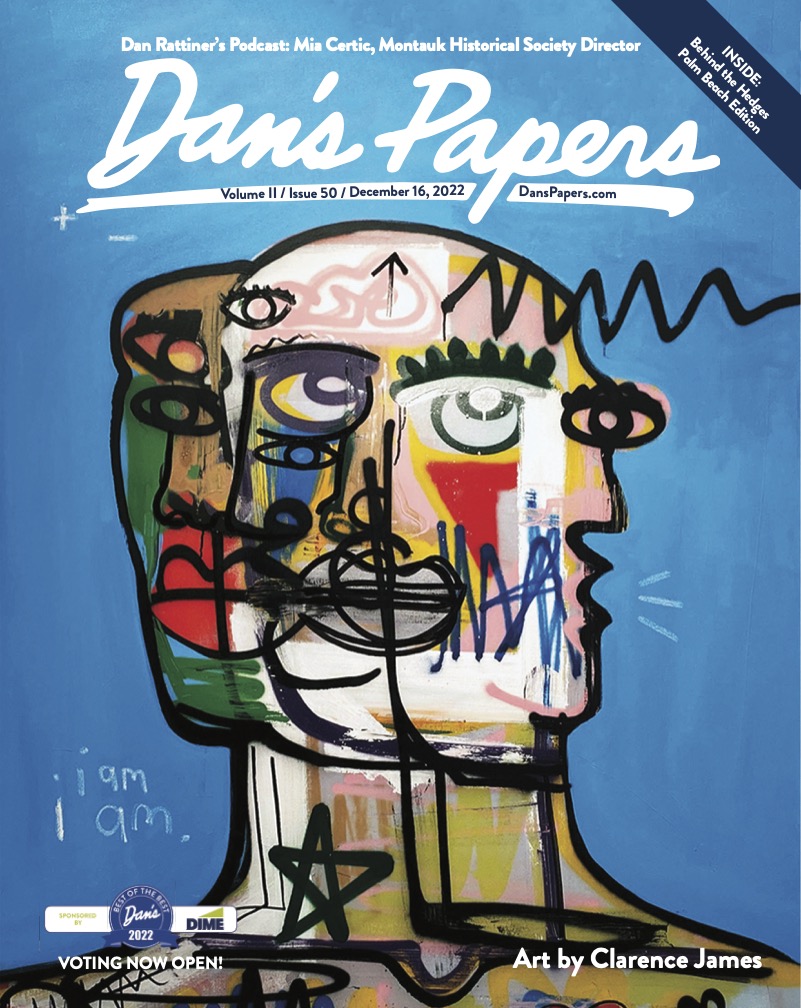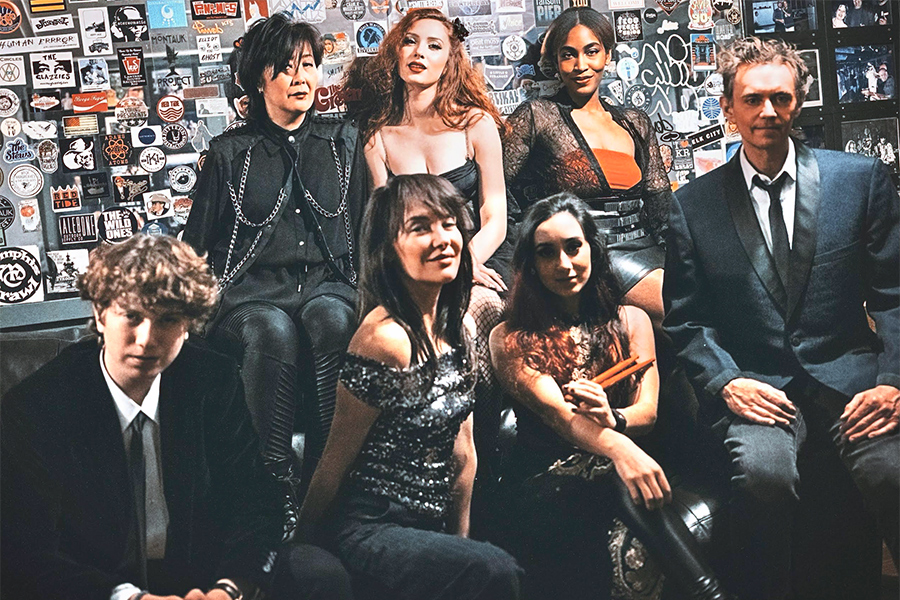Dan's Cover Artist Clarence James Shows at National Arts Club, Talks HBCUs
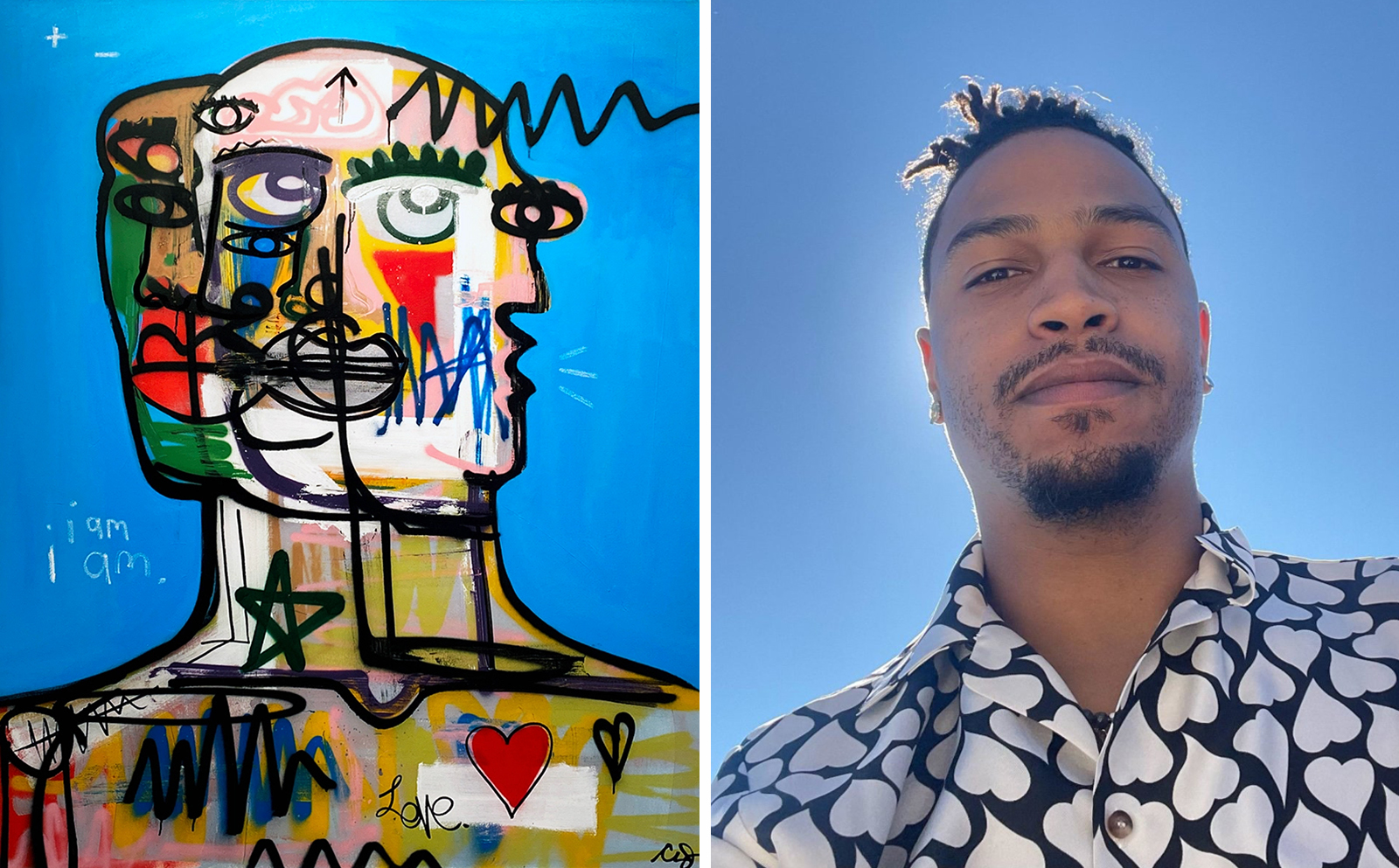
This issue’s cover, provided to us by DTR Modern Galleries, features the work of Clarence James, whose National Arts Club solo exhibition, Find Yourself, is on view in the Grand Gallery through Saturday, December 17.
Growing up in Raleigh, North Carolina in a “very homogenous environment,” James says he sought out a different experience, which led him to Howard University, an esteemed HBCU (Historically Black Colleges and Universities) in Washington, D.C.
“What everyone needs to realize about that, if they don’t realize already, is that an HBCU came out of necessity. Slavery is over, and in 1867 when Howard was founded, it’s not a situation where there’s anywhere else for a descendent of that class of person,” he explains. “The entire college experience at an HBCU is a homecoming, because it’s coming to an environment that’s the inverse of the homogenous comment I made. Now I’m in an environment where I’m seeing myself reflected everywhere, and I’m seeing people that have ambition, want to be better, want to contribute to society, want to improve themselves, and I’m in this whole environment of people who look like me and are on a likeminded mission of being better.”
Midway through business school, James had an “existential crisis” realizing this wasn’t what he had envisioned for himself, and if he didn’t eventually find a creative outlet he’d “lose (his) mind.” After withdrawing for a semester, then returning to finish business school, he graduated in 2014 and jumped straight into painting.
The self-taught artist felt inspired by fashion-art collaborations such as Raf Simmons x Sterling Ruby and Supreme x Basquiat and quickly realized that art could be a realistic, practical occupation if the artist has a sense of entrepreneurship.
With that idea firmly in mind, James founded his personal brand PVMT84. The abbreviation for “pavement” stands for his desire to “pave a path, build a road that others can use,” he says. The “84” is a nod to the George Orwell book 1984, which James included to represent the “control mechanism of society” and the “gap between truth and reality.”
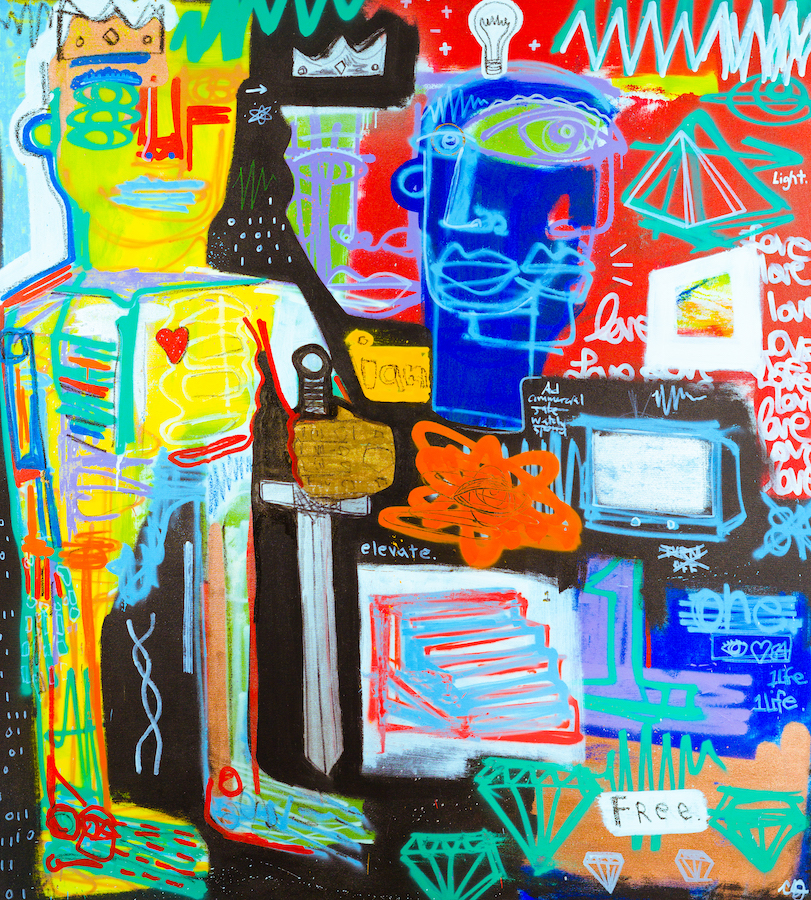
(2022, Acrylic, Aerosol, Oil Stick on Canvas, 73″ x 66″)Courtesy DTR Modern Galleries
He elaborates, “You have truth, which is pretty objective, and then you have reality which is extremely subjective. We all have a different perspective, and if perspective is reality, there are billions of different realities that are concurrently occurring.”
While James still uses the PVMT84 brand for his website (pvmt84.com), he has largely shifted his focus to himself, Clarence James, as the artist and the brand.
To get to this point of self-actualization, however, James would first have to lay everything on the line for his passion. In 2018, after having spent a couple years living in New York, he found himself burnt out, broke, practically homeless — staying with friends and keeping all of his belongings in his car — and was ready to return to D.C.
“I really had to have a soul-searching moment where I had to be honest with myself. What did I have going? What was my real foundation? I had to let go of the young, hopeful dream of going to find that Warhol-type figure that’s going to elevate me straight up to rockstar artist and more so focus on what I can control, which is my art practice,” he says.
In December 2019, he decided to bet it all on his art. “I had a 2003 Acura TL, and I sold it for $1,800 and used that $1,800 to get an art studio (in D.C.). That was a big moment for me; that was a pushing all my chips in moment where I’m taking a big risk and truly going out and fully doing it. … Consequently, I had to sleep in my art studio many a night, right on the floor, and that wasn’t necessarily permitted.”
He adds, “It’s not like the first moment that I felt I went all in, but it was really shifting my paradigm, getting things together and understanding that my work ethic is going to be what takes me where I want to be.”
In a serendipitous turn of events, James was introduced to DTR Modern Galleries and began working with them in 2020.
His collaboration with DTR artist Halim Flowers was purchased by one of the Palm Beach directors, and soon after, the director of DTR in D.C. visited his studio and confirmed him a serious, professional artist worth investing in.
“I started working with them and that’s been beautiful,” James says of DTR. “They’ve got their five locations, and I don’t have to worry about selling art anymore, all I have to do is paint and lean into my business relationship with them.”
Looking back at how far he’s come since not having a place to call home, James adds, “I was definitely in situations (before DTR) where failure was happening, but you can’t quit. You have to push through.”
We had the chance to connect with James on Zoom to discuss this issue’s cover art.
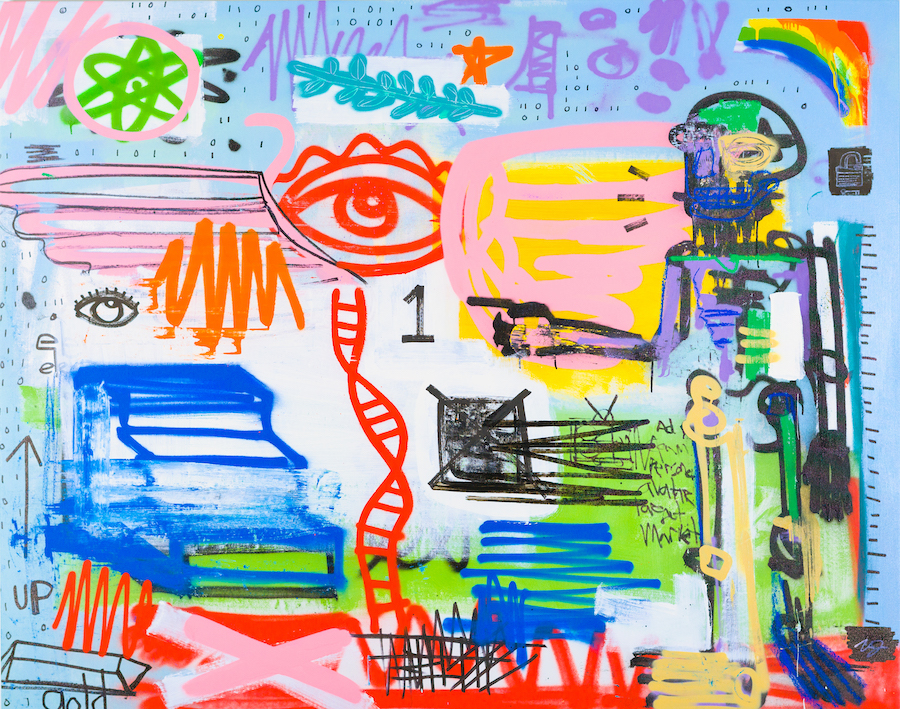
A Conversation with Clarence James
What inspired you to paint “I Was Thinking I Thought” and is it part of a series?
Essentially, all of the artwork I’ve made that DTR has handled is basically one cohesive series. … Of all these paintings that I’ve made and they’ve made available to others, they all follow a theme. What this is is my take on portraiture, so you’ll see it in a 30” by 40” format. … This painting in particular is a 60” by 48” so it’s a lot larger. …
The portraiture is meant to start the introspection. The color palette is meant to get your attention, and color conveys a lot of emotion, so I want to start that interaction with the artwork. Hopefully that puts you in a state of intrigue, gives you a moment for self-reflection, and through that process, hopefully it’s an exercise that you can remember or be reminded of who you are.
When we realize who we truly are, we’re part of one human experience but just the billions of deviations, permeations of that as human beings alive on Earth in the third dimensional plane as extensions of the universe, God, whatever you want to say, but creation is unfolding, and we’re a part of it.
How do you use symbols and text to communicate the themes you’re trying to convey?
In this piece, the first key is to represent the human form, portraiture, now within that what I’m trying to do is offer an illustration of what I was just saying: that we all have a different perspective, we go through different moods and emotions, we are in motion. We are vibrating — all material is light at different vibrations — I’m trying to illustrate the dynamic nature of being alive.
Things like those wave lines coming out of the head are representing brain waves, brain activity, and it’s in and out. It’s our internal process projected out, and it’s also external things interacting with us — thoughts and ideas, visuals, communication through language. And then the arrow pointing up, on top of that brain motif, is about elevated consciousness, which takes effort.
It’s not just being surface level, it’s taking a moment to have a deeper analysis of reality and our experience. And lots of eyes — eyes being the window to the soul, they say. Eyes being the outer extension of your brain and nervous system that’s taking in all those stimuli.
We’re processing reality via our eyes, and eyes represent elevation, light and knowledge.
“I am, I am” is a very powerful affirmation. It’s in the Bible, in the Torah; this is a very ancient concept. Essentially, they’re saying that’s what God is, God uttered that and created the first vibration — in the beginning was the word.
“I am” is not only powerful, but it also connects you with the universal consciousness that was the source of ourselves. Stating that presence and affirming that “I exist. I think, therefore I am” is pulling those concepts together.
Put a star in there. What is it? Dust in the wind. We’re stardust. If you look around the universe, a human being is truly a microcosm of everything that’s in the universe. … What’s a star? A star has mass, has gravitational pull. We can become a star; it doesn’t just have to be a celebrity in terms of a star.
When you have a strong presence, you can be a star and through your efforts you will — almost like the law of attraction — by increasing your mass metaphorically, mentally and spiritually through your thoughts and actions, you can be a star. …
A heart is pretty self-explanatory — love being the most powerful tool that I feel like every human being needs to constantly be utilizing. Then something like the positive and negative symbol is just trying to indicate polarity, and also indicate charge, literally positive and negative, and a complete circuit.
We’re alive, we’re electric, we’re electromagnetic.
What do you find most rewarding about being an artist and sharing your work with the world?
The most rewarding thing is when I realize I’m actually helping people. I’m actually contributing to other people’s lives, and I’m inspiring other people to feel better about themselves, have more self-esteem, have the courage to take that risk and chase down their dream.
As the paintings are selling consistently and interest is growing, I’m realizing that I have a purpose and it’s not random out here. What I’m doing has value and people appreciate it. That’s really kept giving me confidence and reassurance.
To see more of Clarence James’ artwork and inquire about purchasing a piece from DTR Modern Galleries locations in New York City, Palm Beach, Nantucket, Boston and Washington, D.C., visit dtrmodern.com.
